There are about 1.6 million saguaro cacti plants growing inside Saguaro National Park in Tucson, Arizona. We’ve visited this park twice exploring a different side each time. They’ve been short and sweet visits but enough to get a sense of the importance of the saguaros and why this park is a gem. Here are some things to do in Saguaro National Park with kids.
What is a Saguaro Cacti?
Saguaro cacti stand as regal guardians and are an abundant presence in the desert landscape. The saguaro cacti represent America’s southwest deserts and rightfully earn the title of desert monarchs. We learned there was so much more to the giant cacti than meets the eye.
The government protects this expansive area to ensure the survival of the saguaro cactus. Saguaro National Park has two areas or districts to visit. We visited the western section known as the Tucson Mountain District which is hotter and drier.
The Rincon Mountain District, which is much larger, lies 30 miles east. It offers a slightly cooler and wetter climate, but accessing most of the area requires hiking or horseback riding. In addition to the saguaro forests, the higher altitude includes pines, oaks and other vegetation one wouldn’t associate with Arizona’s landscape.
Visiting the West Side – Tucson Mountain District
Drive down to a lookout surrounded by hills adorned with cacti of varying sizes and stages of development. It was a bit strange to see so many cacti in one area and be in a cacti “forest”. They stood there guarding the desert with arms outstretched towards the sky.
Characteristics of Saguaro cacti
The saguaro cactus or Carnegiea gigantean can only be found in the Sonoran desert of northwest Mexico and southern Arizona. It was surprising to find that their columns were almost tree-like.
Spines protected them. They produce white flowers, pollinated by bats, during the spring and have a red fruit in the summer.
Their fig-like fruit ripens in late June and contain 2,000 seeds. The birds and wildlife eat the seeds and the pulp. We actually found a couple of birds’ nests within the cactus’ branches.
We found this exhibit at the visitor’s center. The Tohono O’odham Indians made the fig-like fruit into jam, syrup and even wine. Unfortunately, they didn’t have any samples.
It’s hard to believe that these giant cacti began life as a black seed. The saguaros can grow as tall as 50 feet (15.2 meters) and weigh more than eight tons.
They are the largest cacti in the United States. The oldest saguaros can weigh over 7 tons and can be as tall as a four-story building. Standing below some of them made us feel small but in awe of their beauty.
Lifespan of Saguaro Cacti
It is estimated that saguaros can live up to 150-200 years old in the right conditions. Severe freezing, wind, lighting, vandalism and disease can kill or damage the saguaros. They grow very slowly at a rate of 6 inches every 9 years. They may only grow to about 12 inches when they are 15 years old.
Most of the cacti grow branches or arms. Some of them can take up to 75 years to grow a single one. While their arms usually grow upward, some of them looked whimsical with arms growing in other directions. Some can grow up to 25 arms but we weren’t lucky enough to see any with over six arms.
Though they look imposing and robust, saguaros actually fight many elements just to reach maturity. It is survival of the fittest for these large creatures. Few survive the unforgiving conditions and extreme temperatures of the desert, lightning and animals trying to eat the young plants.
What we found most interesting was that young saguaros were protected by trees like the Mesquite and Palo Verde known as “nurse plants”. Most of the young cacti had this nearby tree companion and protector.
These trees protect them from the sun, extreme cold and the animals. It’s amazing what the nurse plants sacrifice for the survival of the saguaro.
Going on the Scenic Bajada Loop Drive
We did the five-mile Scenic Bajada Loop Drive that took us from a paved road to a dusty, unpaved road. But, we were driving through a dense saguaro forest with some beautiful views.
This area was where we saw some of the dead saguaros and got a closer look at what was inside. Most of their weight is supported by these cylinder-shaped wooded ribs. These wood ribs from dead cacti have been used for roofs, fences and furniture.
Hiking Trails
There are over 165 miles (264 km) of hiking trails between the two districts. You can be sure to find one depending on your itinerary. We lean more towards the short and sweet hikes or doing the the interpretive trails versus the day long hikes especially when visiting during the Arizona summer.
Short on time, our hike was limited to the ½ mile round trip Signal Hill Trail. It was a lovely walk with desert and mountain views. The trail wasn’t very wide but heavily emphasized staying on the trail.
Warnings of prickly plants, rattlesnakes, scorpions and Gila monsters made my kids a bit uneasy as they slowly watched their every step. Luckily, we didn’t spot any of these desert wildlife during our short hike.
Though the saguaros were the main attraction here, there were also a variety of cacti, including some prickly pear, along the trails.
We found this barrel cactus blooming with flowers.
We also liked that there were several picnic spots with grills along the trail. It’s a great way to enjoy the surrounding area.
Petroglyphs on the Trail
One of the main reasons we hiked this trail was to see the prehistoric rock art or petroglyphs found inside the park. The Hohokam people created these petroglyphs.
They were Native American Indians who once roamed this area. Many believe that the Hohokan pecked these into the stones while hunting and gathering more than a thousand years ago.
We saw many of them concentrated in one area on the Signal Hill Trail. Their meanings have kept everyone guessing and range from religious, ceremonial symbols, markers or ancient graffiti.
It was surprising to see such a large concentration in one area. My kids enjoyed interpreting their own versions of what some of the petroglyphs could have meant. This is a great family-friendly trail and looking at these petroglyphs is a wonderful way to learn more about the people who used to live in the area.
Other kid-friendly hikes in the west district include the Cactus Garden Trail at the visitor center and the Desert Discovery Nature Trail (.5 mile loop north of the visitor center). Do either of the short trails or both of them. It’s a wonderful way to see the desert plants up close.
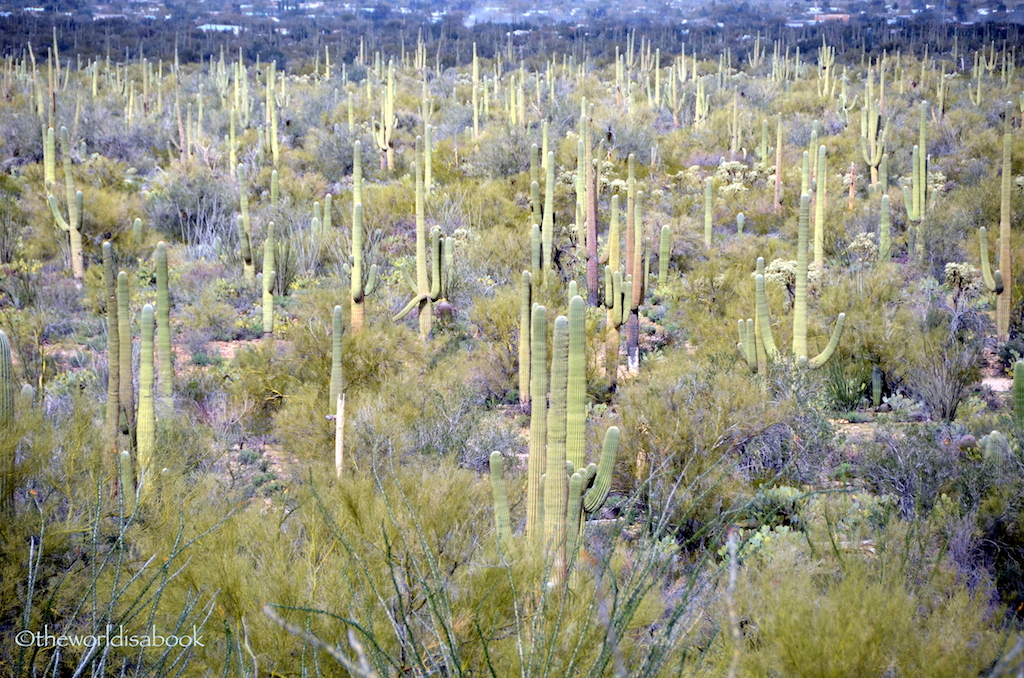
Visiting the East Side – Rincon Mountain District
During another visit to the park, we explored the Rincon Mountain District entering through the east side of the park. Unfortunately, we were here after the visitor center was closed. Our main purpose was to go on the Cactus Forest Scenic Loop drive especially during sunset and this short trip didn’t disappoint.
This one-way, scenic 8-mile (12.9 km) drive is a great orientation to the park. If you’re on the east side and are short on time, we highly recommend doing this drive. It gives a wonderful perspective of the park and allows visitors to see the various saguaro plants up close.
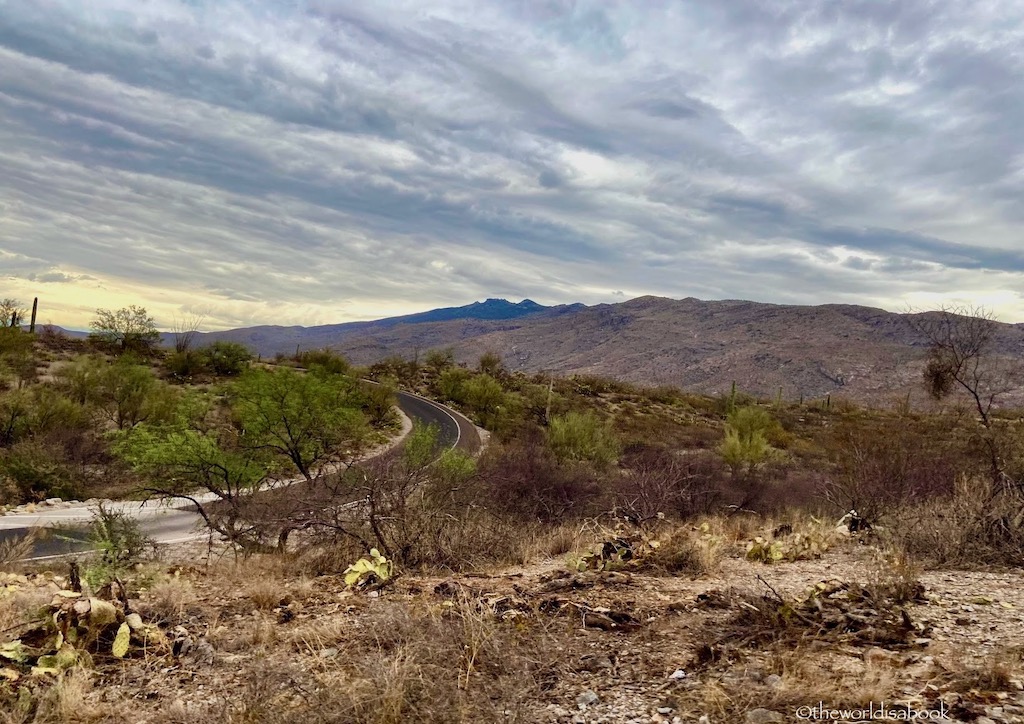
The loop drive may seem short but it took us almost two hours to get through it after several stops along the overlooks and viewpoints with plenty of photos along the way. We highly recommend stopping at the lookout points and going on the short walking paths to see the saguaro up close or to see a number of vast cacti forest.
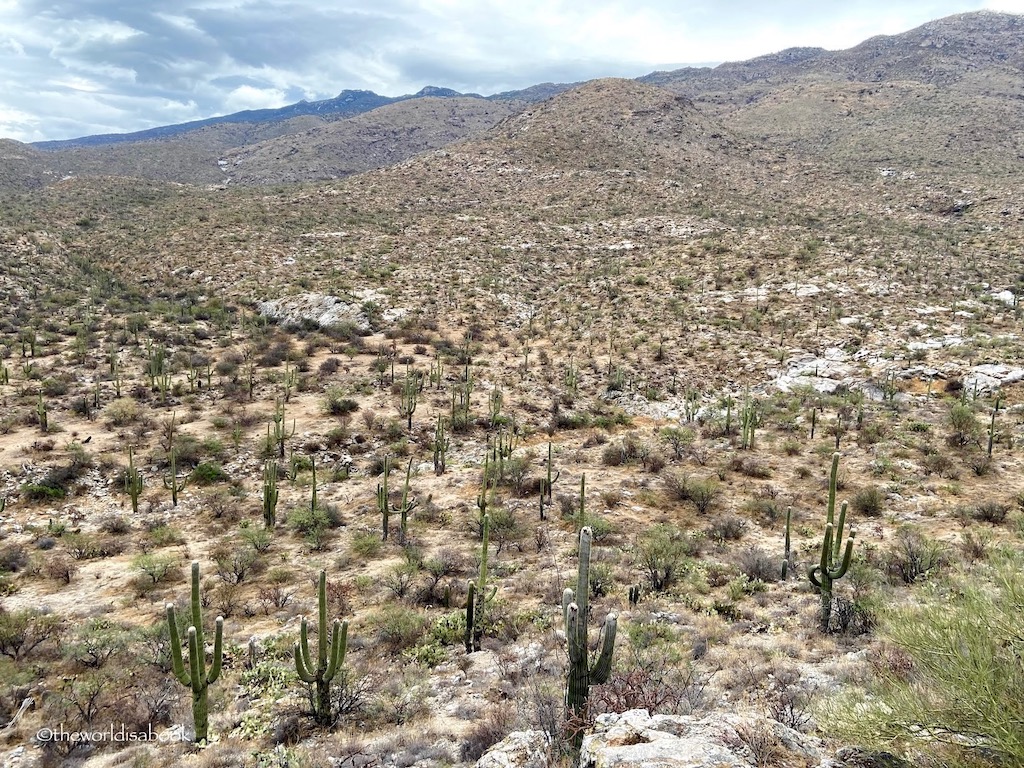
East Side Trails
If you have a little bit more time, there are some short trails along the loop drive. Don’t miss the 0.25 mile (0.4 km) Desert Ecology Trail where you can see some of the plant residents of the Sonoran desert and goes along the Javelina Wash.
One other doable hike and a trail we wish we did was the one-mile Freeman Homestead Trail. This was the site of the foundation for an old homestead. It was a bit hard to believe people actually lived in this area. There was also a grove of large saguaros along the way with plenty of signs to let visitors know the various plant life and area history.
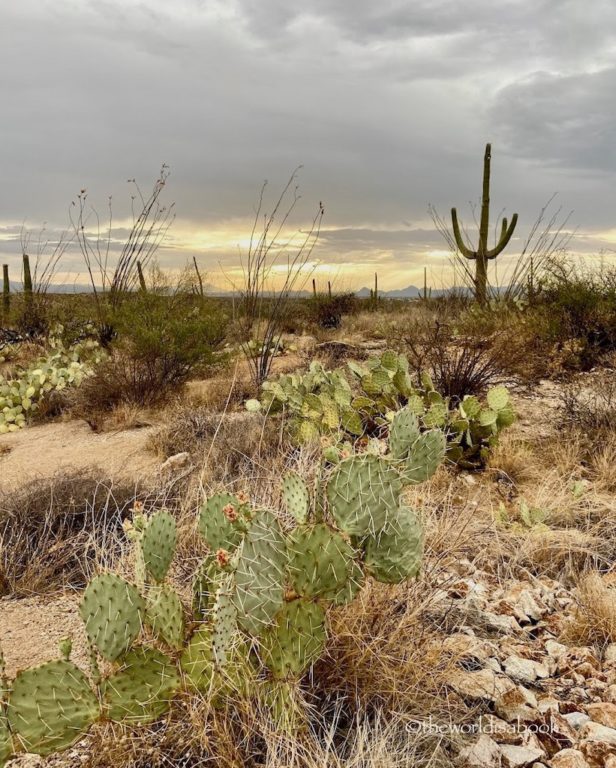
As you can see, my kids have grown quite a bit between our visits to Saguaro National Park. But, even as teenagers they enjoyed the Cactus Forest Scenic Loop drive and seeing the variety of cacti and the “funky” saguaros. Plus, the saguaros actually made for some awesome backdrops for Instagram or Snapchat posts.
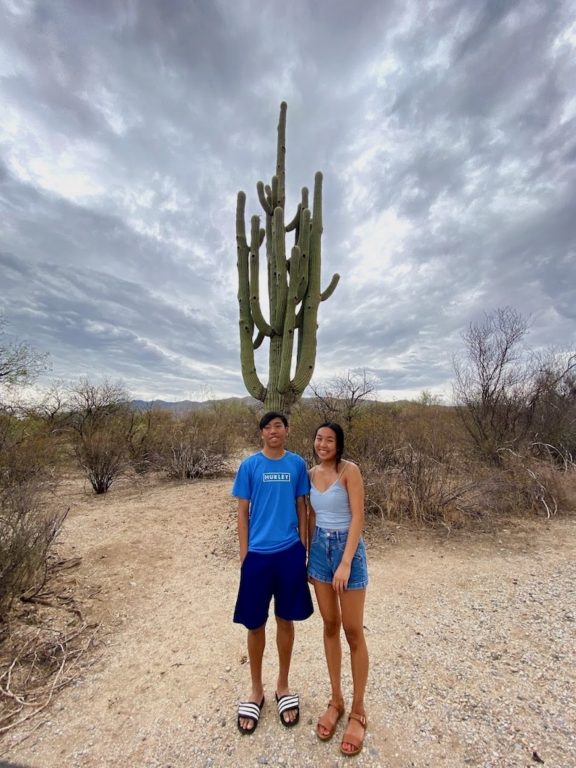
Visiting Saguaro National Park with Kids
We visited the Red Hills Visitor Center on the West District which showed a movie and plenty of exhibits that will entertain the kids. They had a table where kids can see some of the wildlife up close including antlers and skins.
There was also a small section for the kids to color and do some interactive activities. The visitor centers should always be any park visitor’s first stop as an orientation to the park and to figure out how to maximize your time wisely inside the park.
My kids have always loved the National Park’s Junior Ranger program and always looked forward to completing the Junior Ranger packet and activities. The packets kept them engaged and they learned quite a bit about the plants, wildlife and park. They always enjoyed being sworn in and getting their certificates and badges.
The Arizona desert is a special place to visit but this unique park really made us appreciate everything the majestic saguaro cacti endure to survive. Though, cacti may be everywhere in Arizona, this park is still very much worth a visit.
After all, there aren’t many places where you can explore a cactus forest. We also really liked that this park was not very crowded despite a city at its doorstep.
Tips for Visiting Saguaro National Park with Kids
- Stop at the visitors center to get trail maps, talk to a park ranger or see exhibits to learn more about the desert ecosystem and what’s inside the park. We learned so much about the saguaros and this park during our stop at the West District visitor center.
- $25 entrance fee (valid for 7 days). Check out this page on various ways to pay fees at Saguaro National Park.
- Check these specific dates for National Park fee free days. If you’re visiting other nearby parks throughout the year, try to get the annual pass.
- No restaurants, camping or lodging inside the park. Bring plenty of water and snacks. There are no concessions or eateries inside the park.
- Travel time between the two park districts is about an hour. You can visit one or both districts on the same day if you’re short on time. We preferred the West District which seemed to have more family-friendly trails and activities for kids.
- If you’re visiting the East District, we highly recommend going to Saguaro Corners Restaurant and Bar afterwards for some good food.
- Remember that desert heat can be quite intense especially during the summer. Wear plenty of sunscreen and stay hydrated.
- Recommended time to visit Saguaro National Park is October through April when temperatures during the day are comfortable compared to dry desert heat during the summer. Visit during Spring to see the wildflowers and blooming cacti.
- Here are some other tips for visiting National Parks with kids.
*Have you explored Saguaro National Park?
PIN IT FOR LATER!
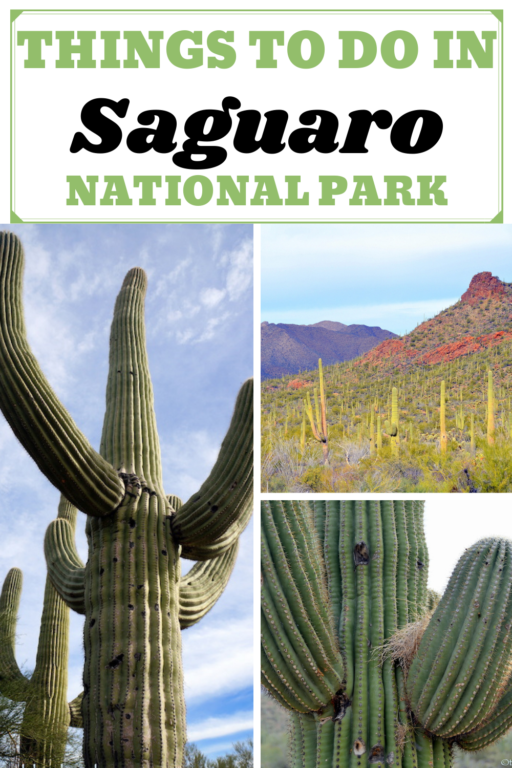
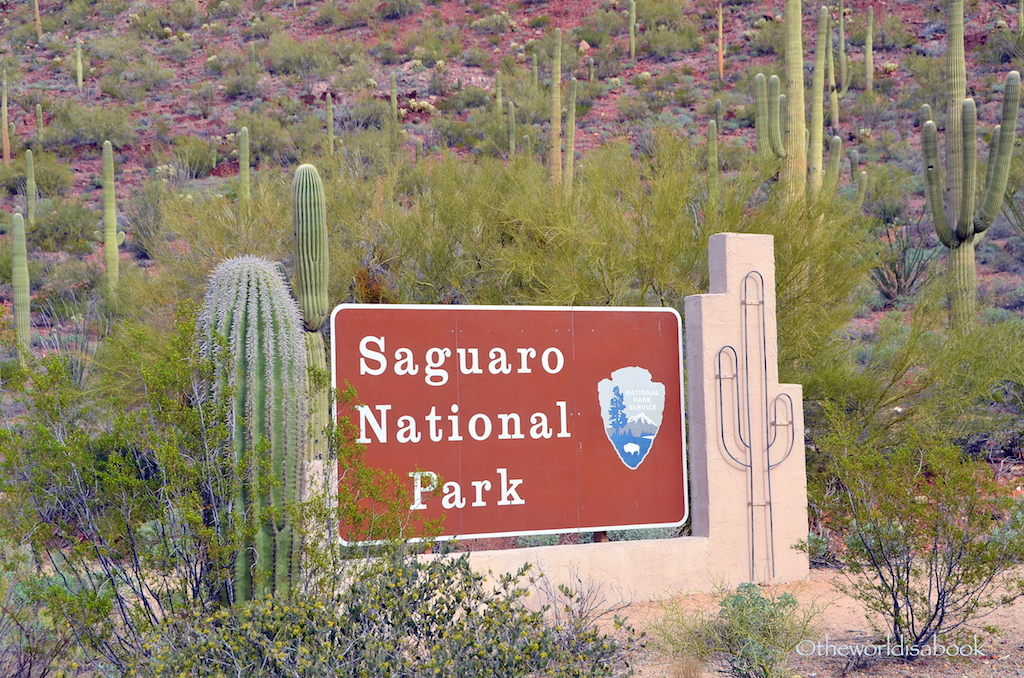
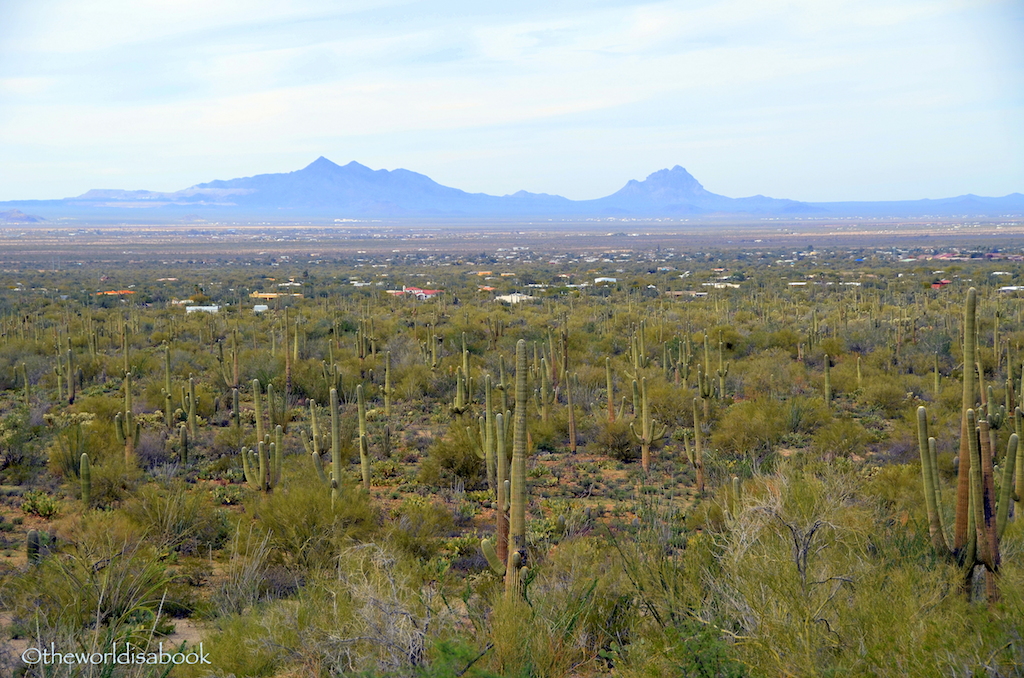
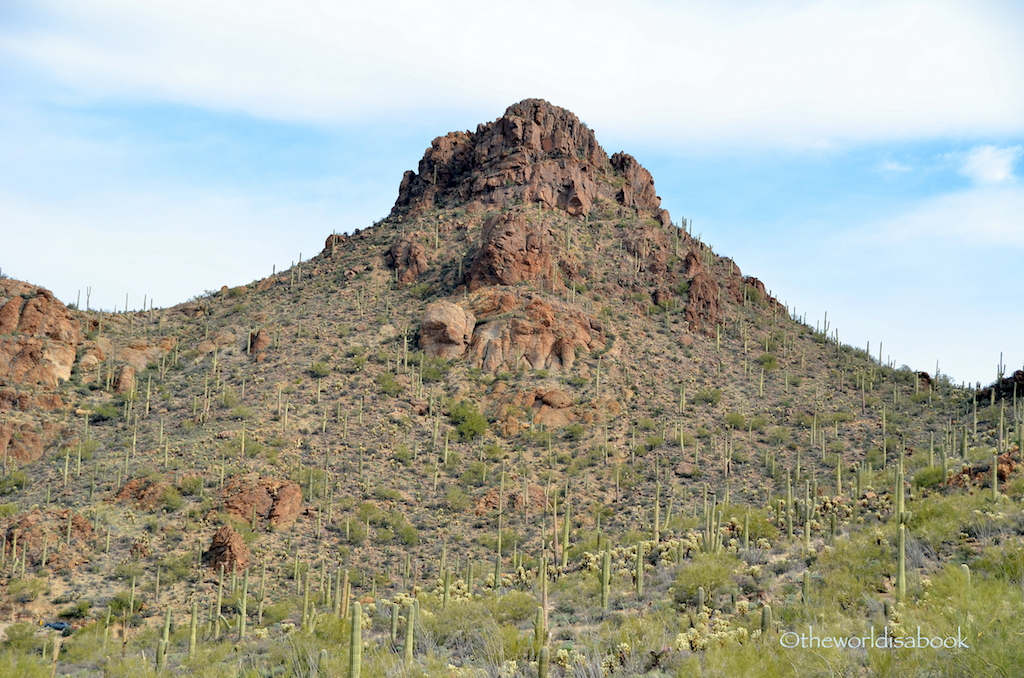
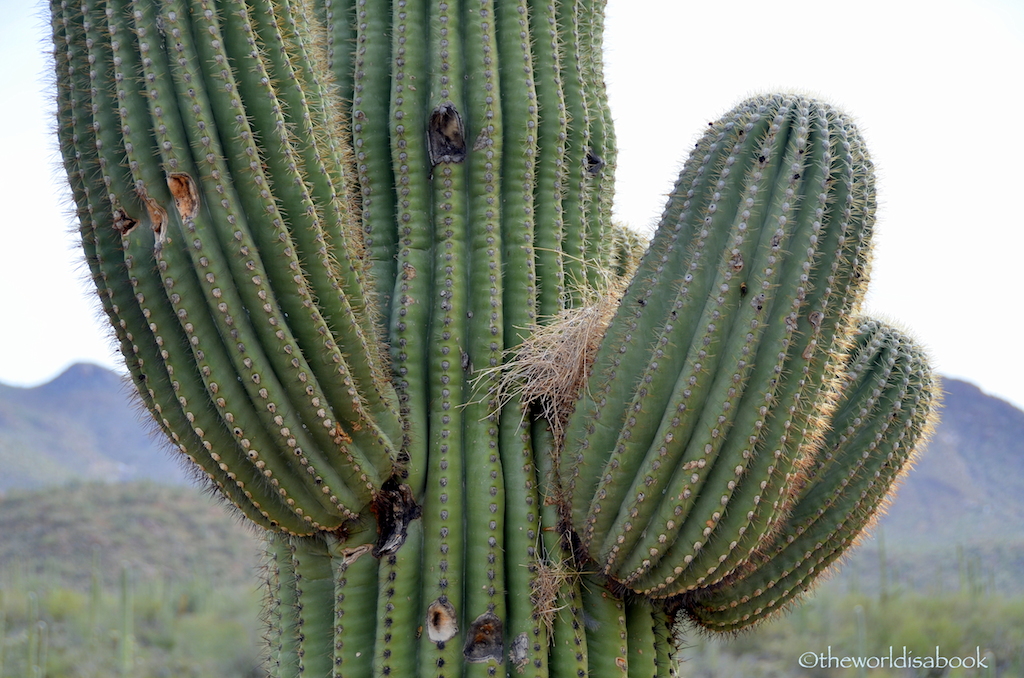
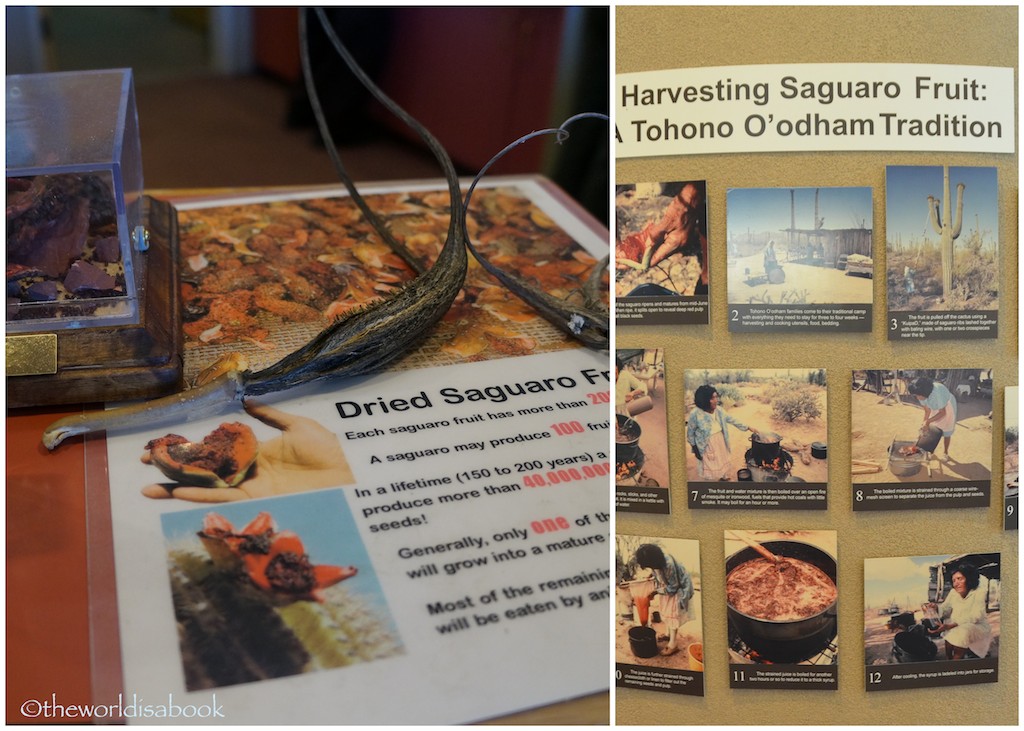
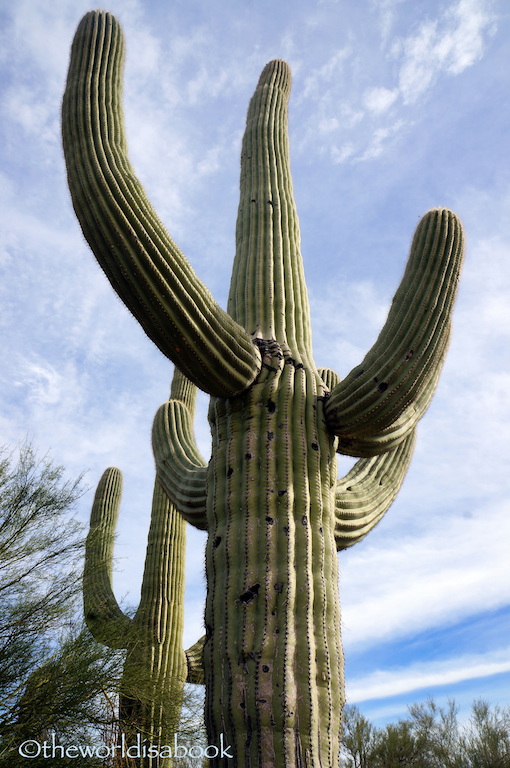
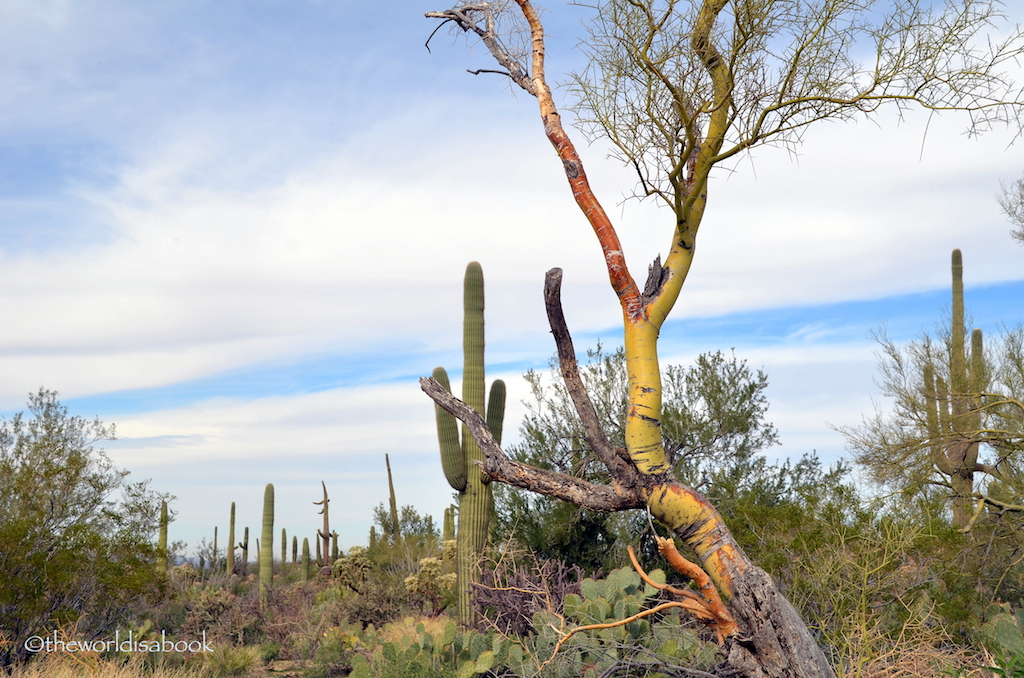
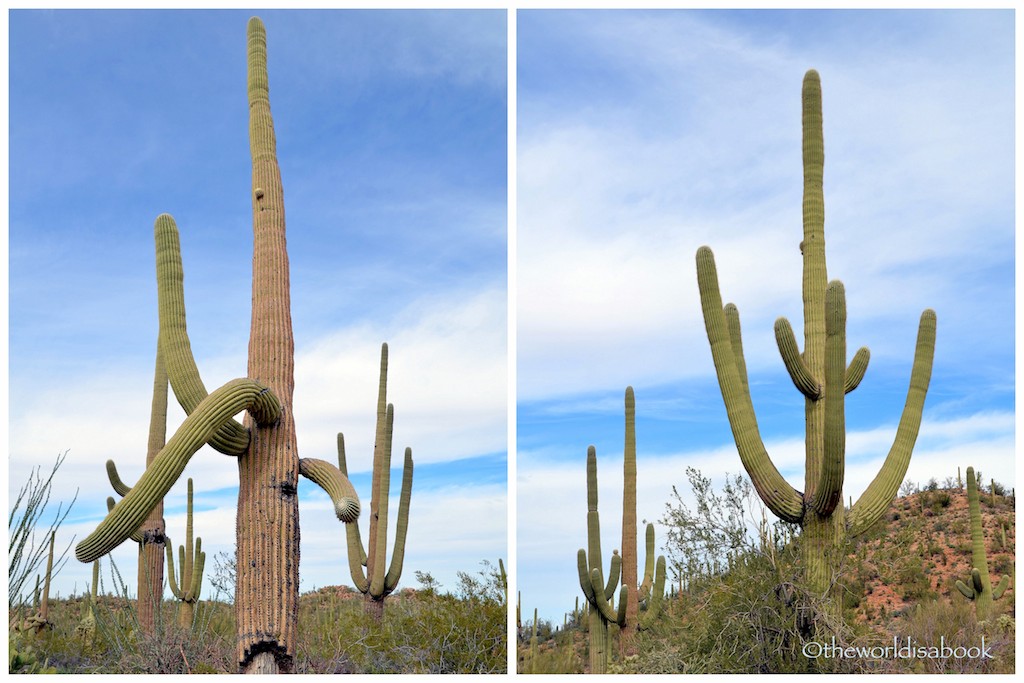
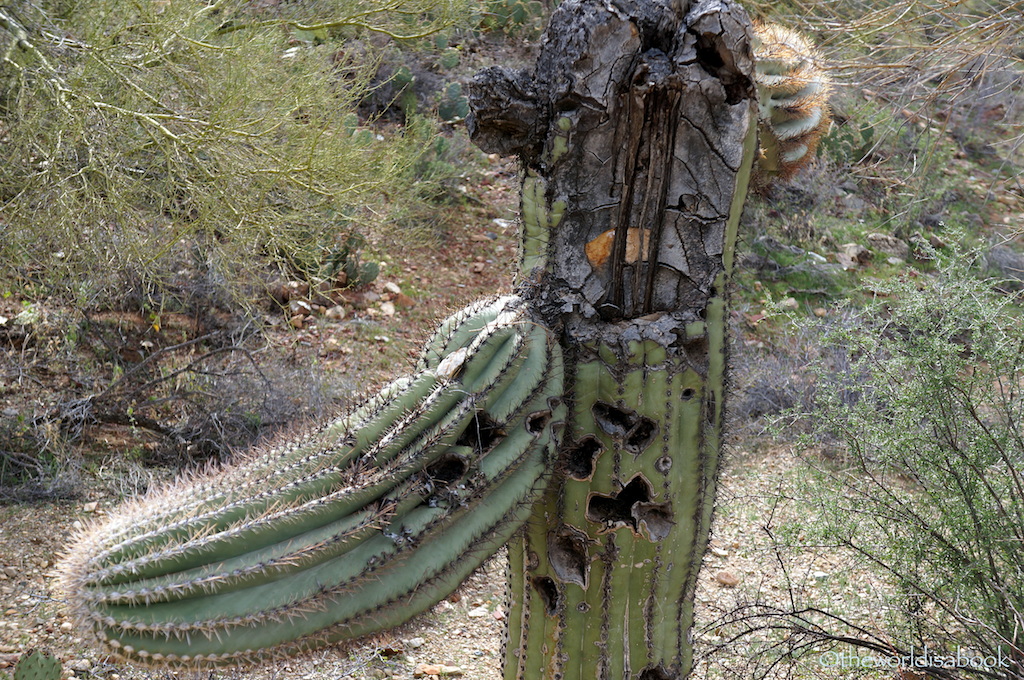
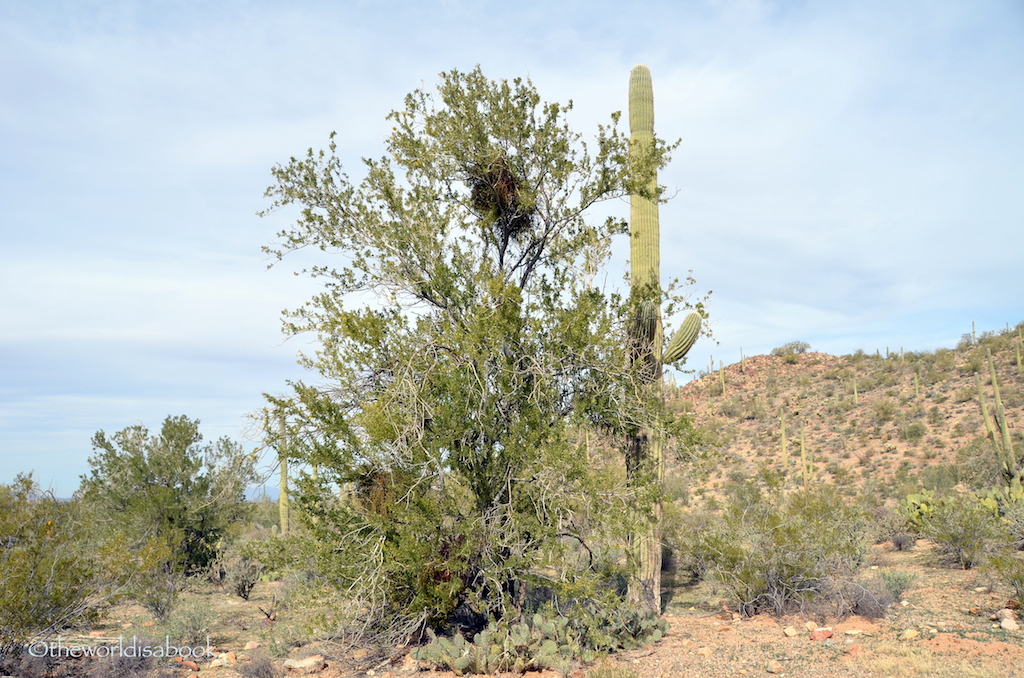
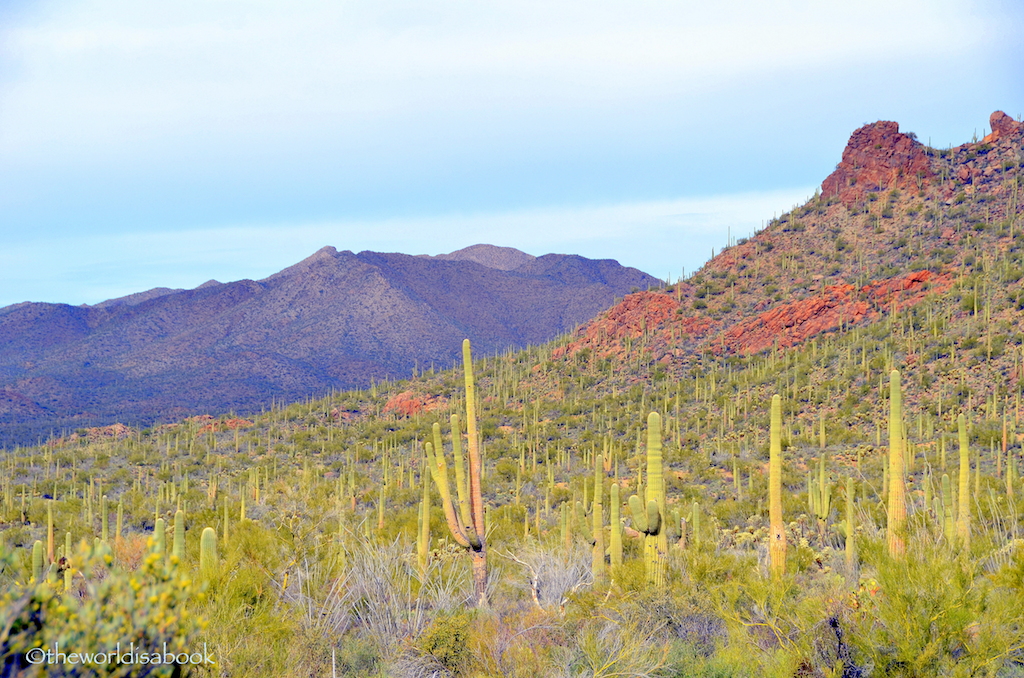
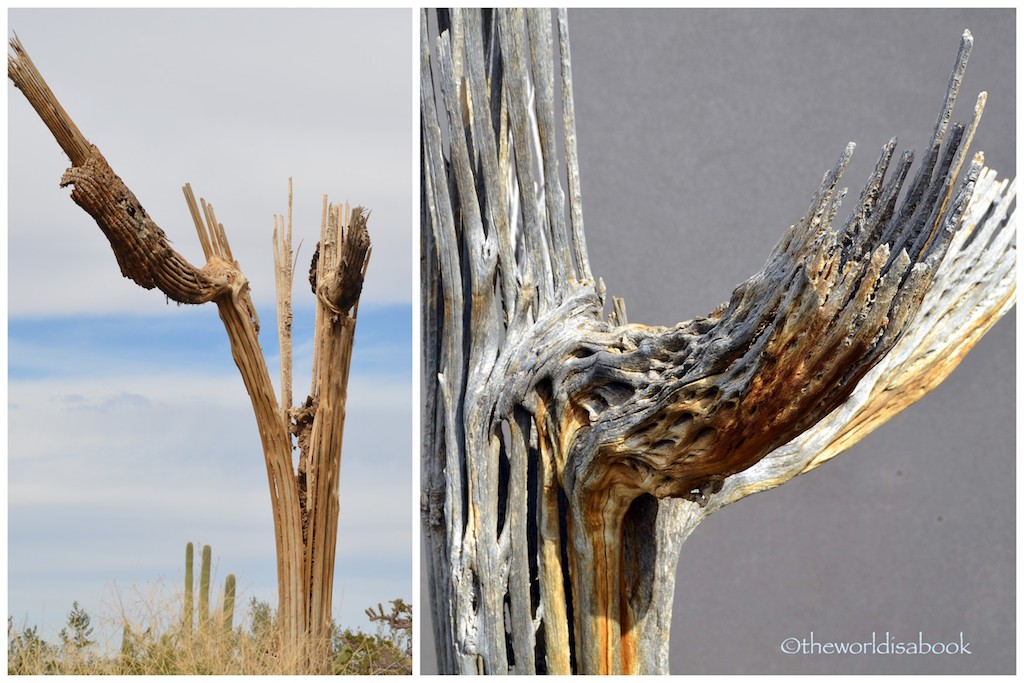
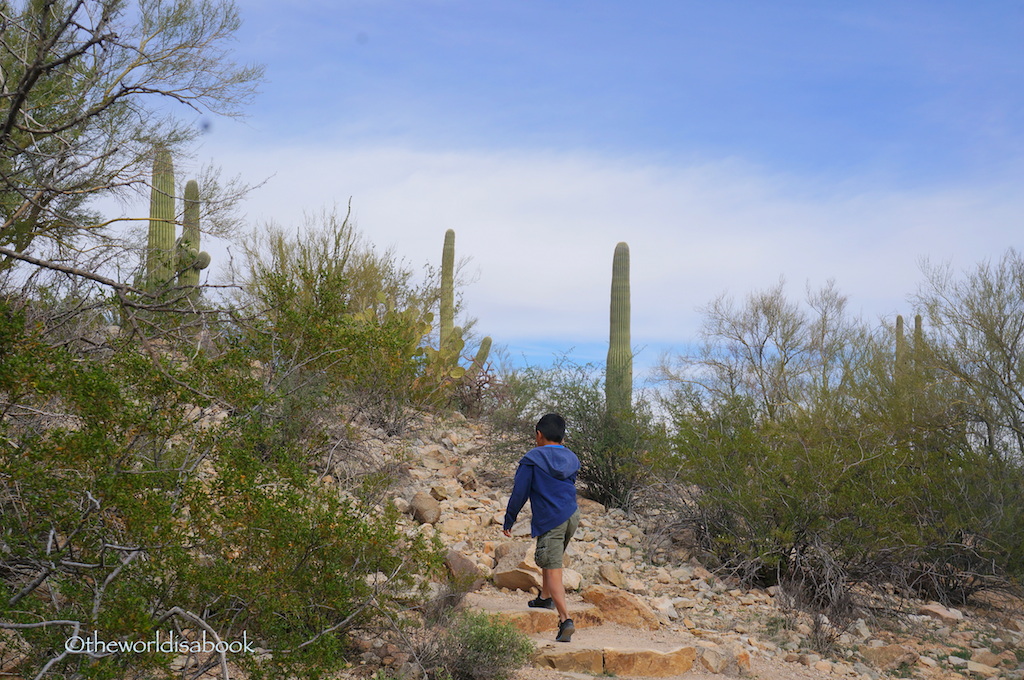
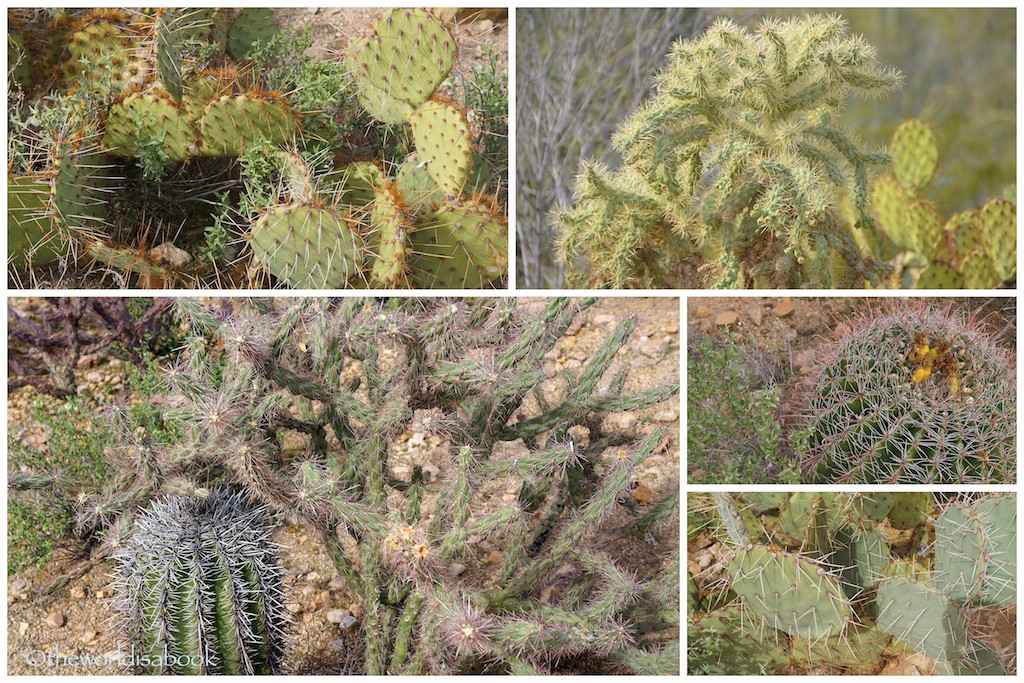
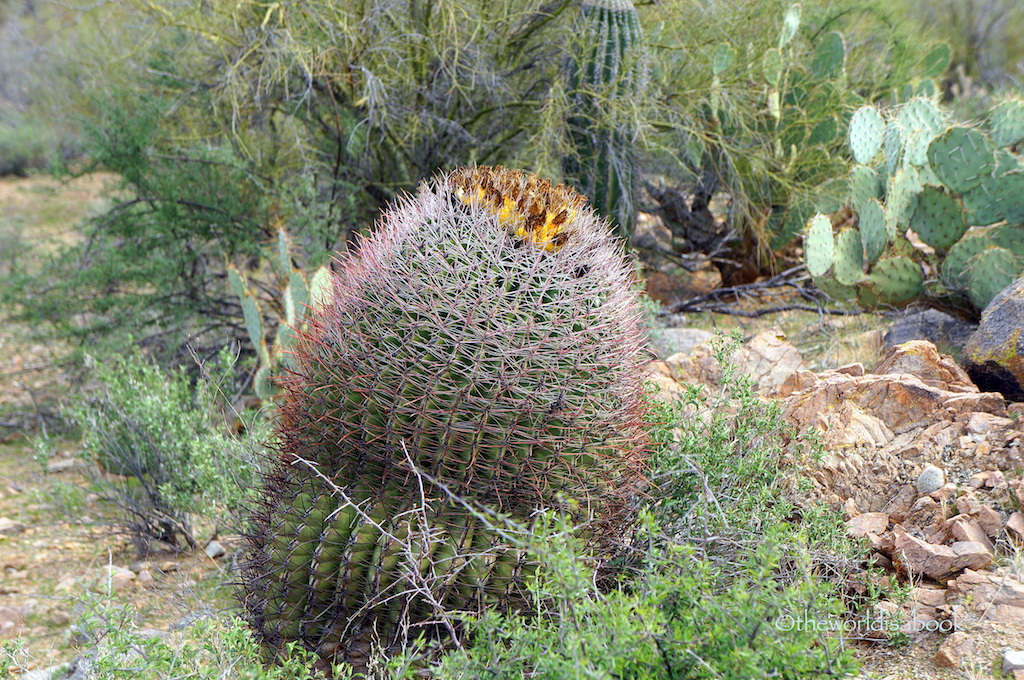
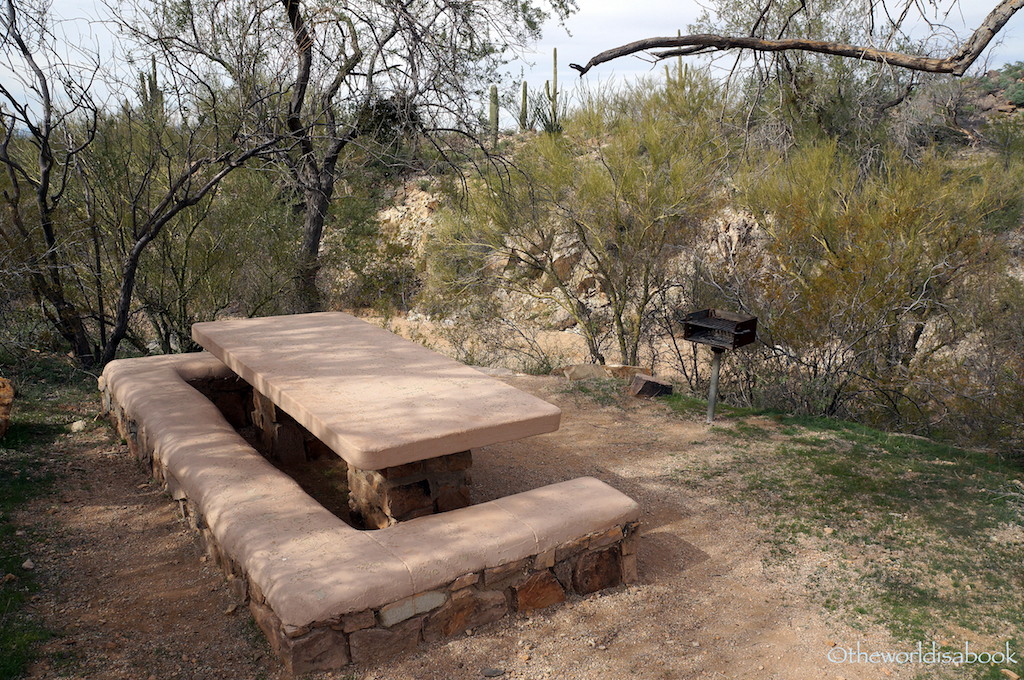
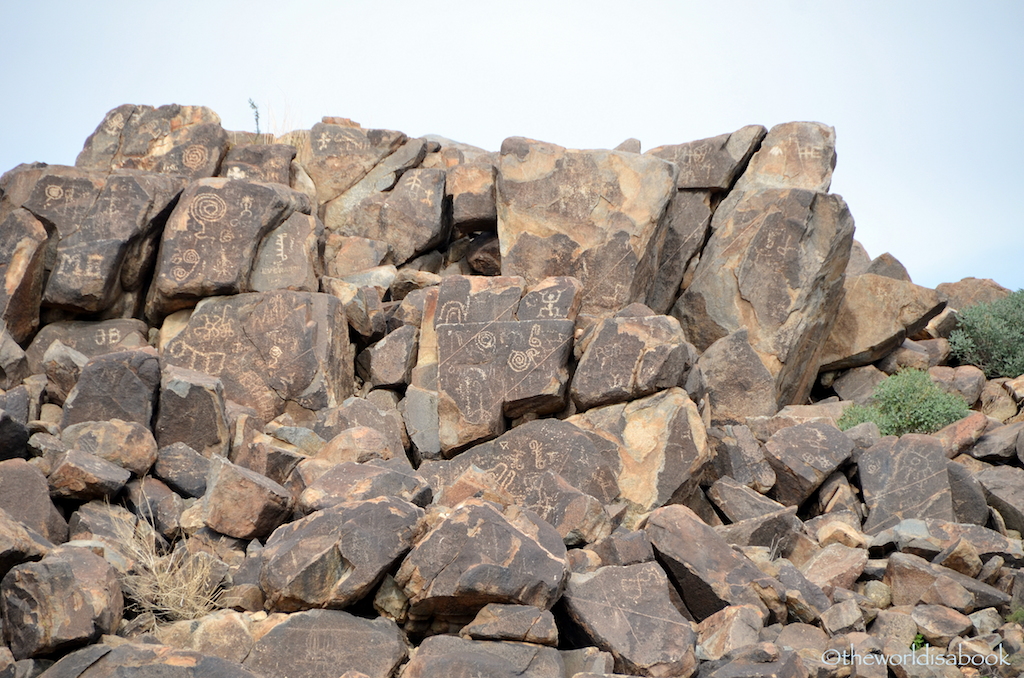
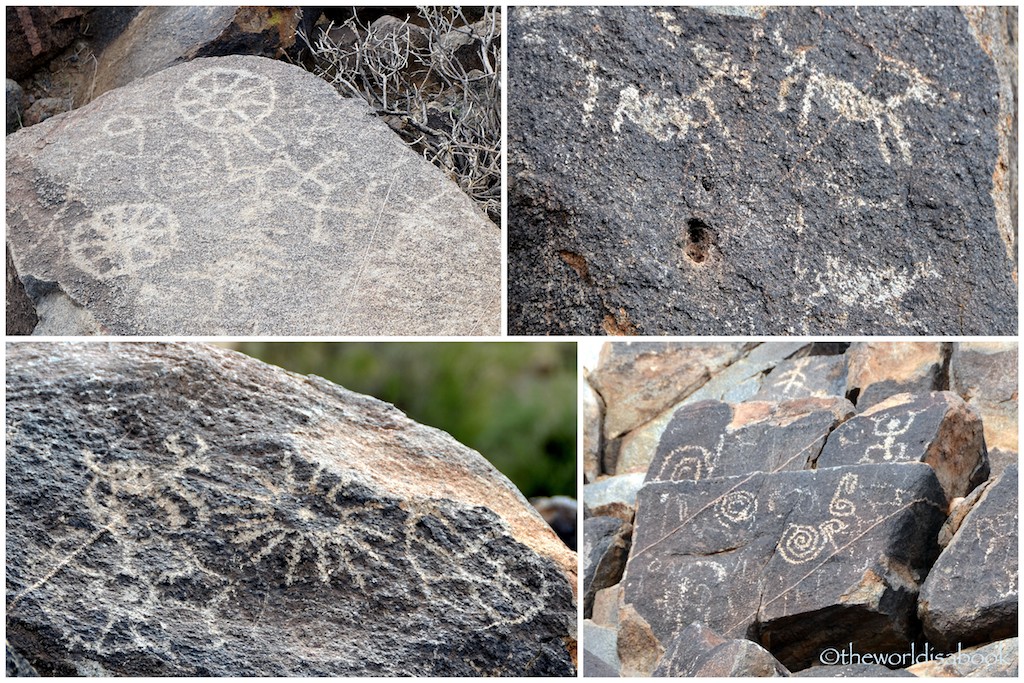
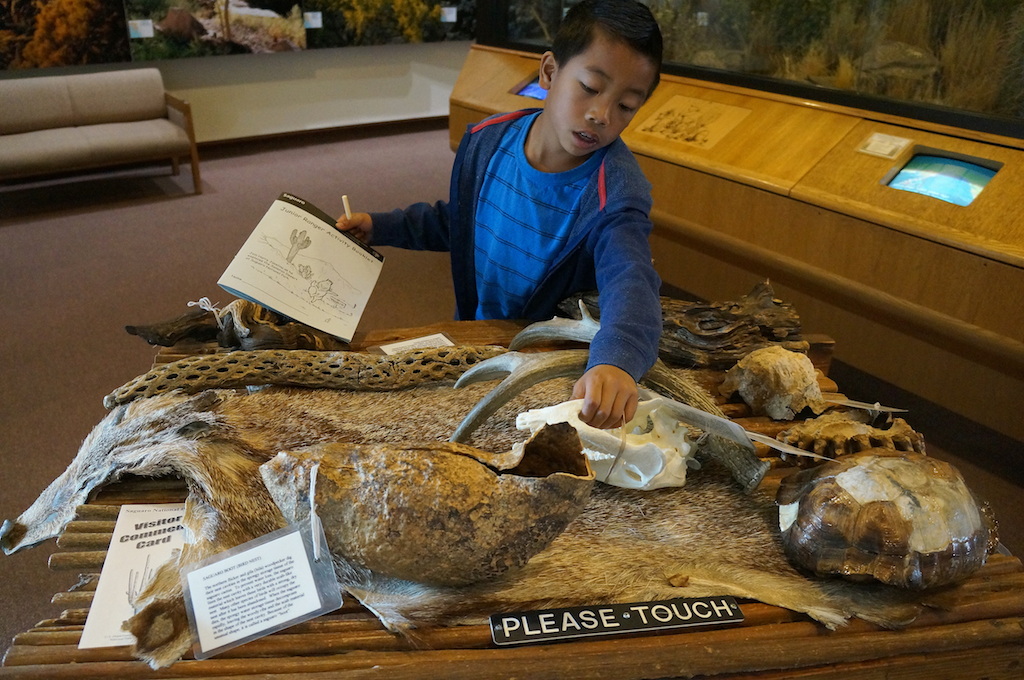
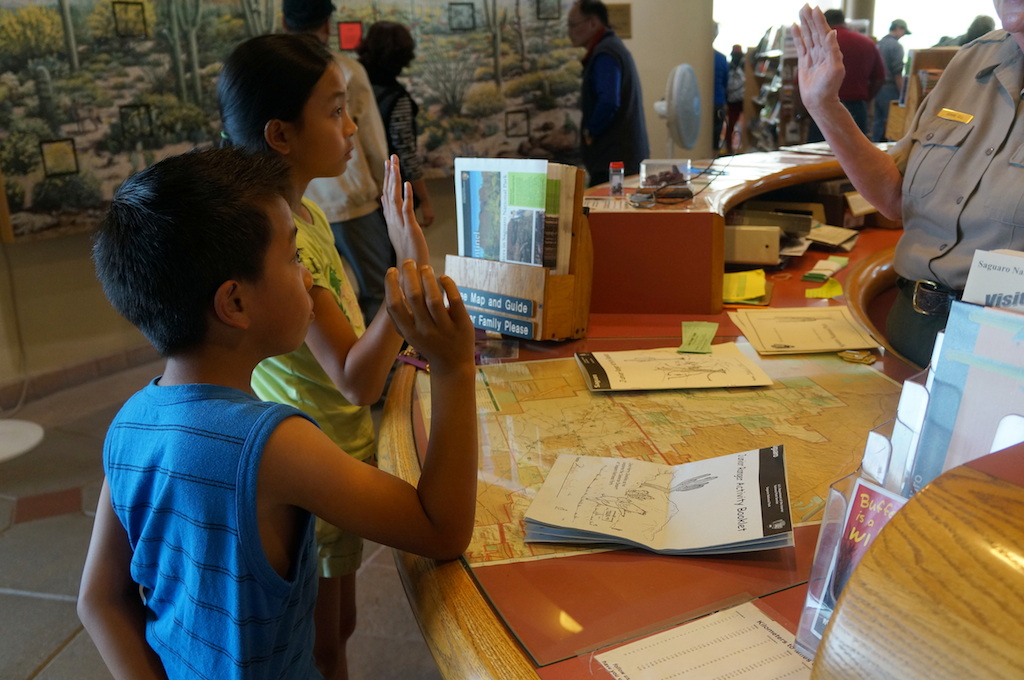
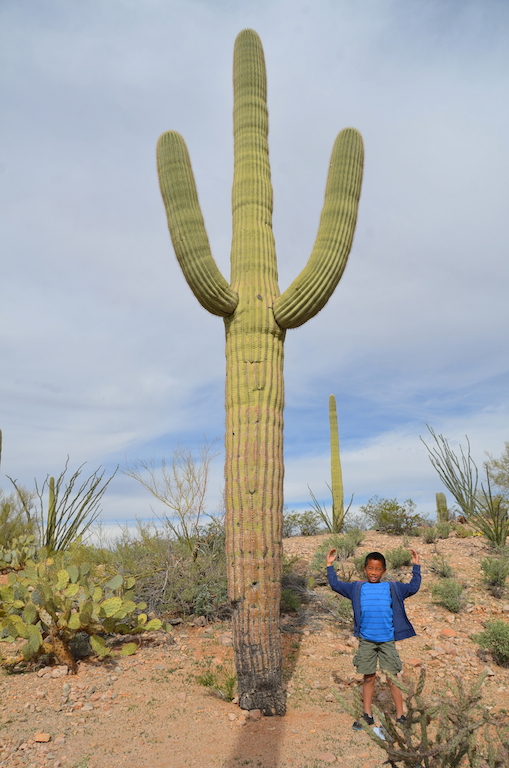
Looks like such an interesting hike! Great photos. I’d be a bit uneasy too about the desert wildlife! They’re so brave ;)
Thanks for sharing!
Thanks Lauren! We were told most of the wildlife come out at night and the snakes appear during the summers. We made sure to stay on the trails.
I’ve always thought the saguaro’s to be regal sentinels of the desert. I loved our trips through Arizona I was fascinated how the provide such a circle of life. I would so want to be sworn in the kids and get my badge too, Mary! :)
I like that – “regal sentinels” :) I know the kids get all the fun stuff at the National Parks. It really is a great way to learn and I use it too for learning.
I love Saguaro National Park and am in awe of the plants and animals that call the place home. Mary you got some great photos on this trip – and I particularly love the one of your kids looking so very serious.
Thanks Leigh! Yes, they take that whole swearing in seriously and repeating to protect and conserve from the park rangers. It really is amazing to see what can survive in such harsh environments.
Amazing place…
It really was..thanks Lili.
What a beautiful job you did in capturing the wonder of the saguaro. I take so many photos when in Arizona and have never made the effort to tell their story, I am so glad you did because it is a beautiful one. Great post!
Thanks Jackie! I used to hate driving through deserts until we started exploring National Parks like Death Valley and Saguaro that made me appreciate everything that survives there. The saguaros are something else and I wish more people can see these in person.
Awesome place, great experience for the kids! So nice to be more outdoors and experience nature – and be a Junior Ranger, too!
Great post, Mary!
Thanks Monique! Being a Junior Ranger is a highlight for visiting some of the parks.
Awesome place and beautiful pictures too! It is amazing the amount of beauty and plant life that exists on a supposed desert.
Thanks Rachel! I have underestimated the beauty of the desert many times and I’m glad I got to share this little piece of Arizona.
My son would enjoy this. He had his first encounter with cactus last fall in New Mexico.
My kids always get a kick of seeing huge cacti but they’ve never seen them as tall as the saguaro. I know your son would love exploring this park.
Woah this looks like a prickly trip! Love your photos, and how incredible that such plant life can exist in a desert like this.
Thanks Jo. Haha..it was a prickly trip and I’m just glad the kids didn’t get pricked by any of the cacti. The desert holds such wonderful surprises.
A forest of cacti…amazing. They are quite regal! I love how your parks in America have a fabulous range of activities for the kids…the junior ranger programme is a great idea!
Great photos and tips, Mary! I’m hoping that we will get to visit this park during one of annual visits to Phoenix…as Bergen gets older, I’m hoping we can travel further from our hub in the Phoenix area!
I’ve stayed in Tucson twice, and also traveled throughout southern and northern Arizona where this is equally great scenery.
Cool park to visit. I would like to see the Saguaro and all the birds. Wonderful series of photos. Thanks for sharing your visit.
I knew saguaros were large, but I didn’t realize they could reach 50 feet tall or that they grew so slowly. Were you afraid of getting stuck by one while you were hiking? There are numerous prickly pears near our Texas home, but I’ve never seen a saguara with my own eyes.
We didn’t hike for very long and the ones we saw looked pretty stable. There was also no lightning storm in sight. I may have though twice if we were here during the summer.
Your pictures are amazing. I had truly no idea those cacti were so high! And the view of the desert is so different from my everyday surrounding, I felt like I was on vacation for a while!
Your photos are stunning. I don’t think I have ever seen so many cacti in one place. I had no idea that they produce fruit.
I think cacti are just incredible plants. They may not be as attractive as others but they support so much life around them. Excellent post.
The saguaro is such an incredible looking plant! We saw some years ago when we went on a desert tour from Scottsdale but I would love to return to Arizona and see more. Would love to see the saguaro when it’s in bloom!
The West has such beautiful scenery! We weren’t able to see the Saguaro on our trip, but originally this was one of the places that I wanted to visit but it wasn’t really on our route so we skipped it- hoping to make a return trip to explore further another time.
Great place to be at sunset.
What a great post! I grew up in Colorado and my father was a park ranger ~ we spent so much time in the national parks! I really miss it now that we are overseas most of the time! Love the post and the pics are beautiful! I have never been to Saguaro but I will have to put in on my list! Thank you for sharing!
I’ve never heard of the saguaro cactus. But I find them beautiful (as well as your photos!).Unbelievable that they can grow up to 15.2 meters (?!). It always impresses me how the nature thought of everything – baby cactus even have a protective plants growing near them. Nature never stops amazing me!
I love, love, LOVE cactus plants. Each house we;ve lived in I cart them in my big posts and then break them off and repot and plant in the garden. When we moved to Croatia I was so sad to leave them all behind, and swore to start a collection here. I have not done that, and now after seeing this you’ve inspired me. 1. to go here if I ever get the chance & 2. to get to the local garden centre. Thanks for once again linking up with us for #SundayTraveler
Looks so foreign and other-worldly! Your pictures are absolutely wonderful :)
What a wonderful tour, you laid it out so well and your pictures are beautiful, thanks for the tour.
Your pictures are amazing, and the Saguaro National Park is on my list of places to visit. Love the American Southwest.
Wonderful look into Saguaro National Park! Your photos really brought it to life. Visiting all the National Parks is one of my ‘do before I kick the bucket’ items. I didn’t know much about this park, but now I’m going to make sure I get there. I think the Park Ranger swearing in for kids is great! I saw that at Carlsbad Caverns and wanted to do it. haha Thanks so much for sharing!
Great post and photos! Saguaro National Park is definitely high up on my US bucket list. I’ve worked a lot with cacti for research projects, but I have set to see a Saguaro in the wild. It looks like an amazing park with lots to see and do. Thanks for sharing and safe travels!
I love the saguaro forest shot with the orange mountains, bright lime green plants, purple background hills and blue sky. Isn’t nature wonderful. The photo below of the dead tree is another favourite with the orange stain/light against the grey ribs. Gorgeous.
What a beautiful, strange place! I’ve somehow never made it to the southwest, but I would love to see a real desert.
There is so much I love about this post. One of my favorite things to do in the States is visit the National Parks, and as a teacher, love the Junior Ranger programs. My kids did them all over the place. They really keep the kids engaged! Love your photos, too!
I loved this post! I really felt on a tour around this wonderful national park. You took some amazing pictures and really made me feel as if I had been there. I definitely bookmarked this post for our future travels!
Your photos are beautiful and really transported me to Arizona. I haven’t been anywhere near this park but it looks fabulous and will be added to my ever-growing list of “must-sees”.
Gorgeous color in your photos – wow! I lived in Tuscon for a while, so it was fun walking down memory lane in your post. Thanks for sharing via #SundayTraveler!
It looks like you had a great time at the park! When I was at Yellowstone as a child I remember completing the Junior Ranger program too. I still remember it years later. Hopefully it made a strong impact on your children!
What a gorgeous place. Love how the field is covered in cactus. Beautiful photos, Mary!
I want to go!!
Those are some pretty big catctus! (cacti?) I really wish I went to more national parks in the States when I still lived there, always possibility for a future trip!
Many years ago I was there. Such an interesting place.
Great to have you at Oh, The PLACES I’ve been!
– The Tablescaper
Beautiful pictures Mary- I wish we had spent more time in Arizona last year when we went to Sedona. Looking forward to going back one day getting up close to the Saguaro.
I was just in Arizona and I love the desert beauty. I was fascinated by the petroglyphs as well!
Whenever I see petroglyphs I am amused to think that we look on it as deep art with spiritual meaning, while it’s just as likely the older generation thousands of years ago was grumbling about “these kids today and their graffiti. We’ll never get this mess cleaned up.”